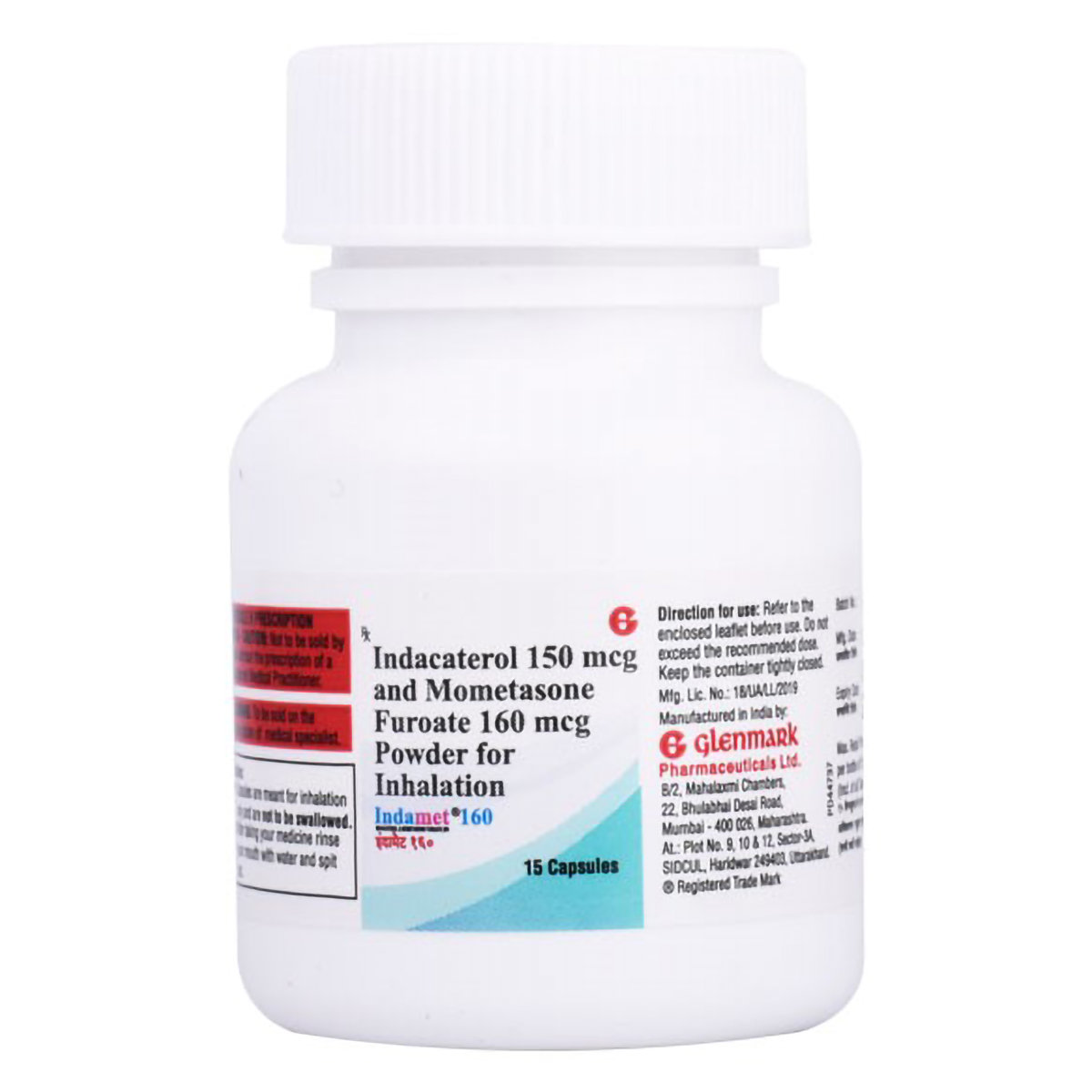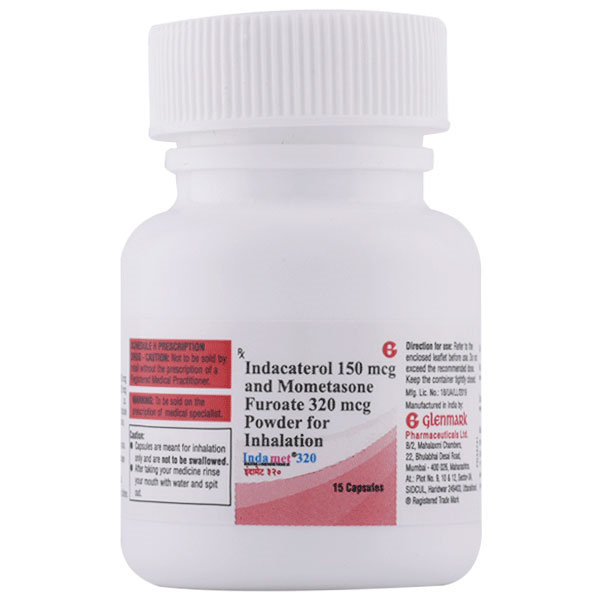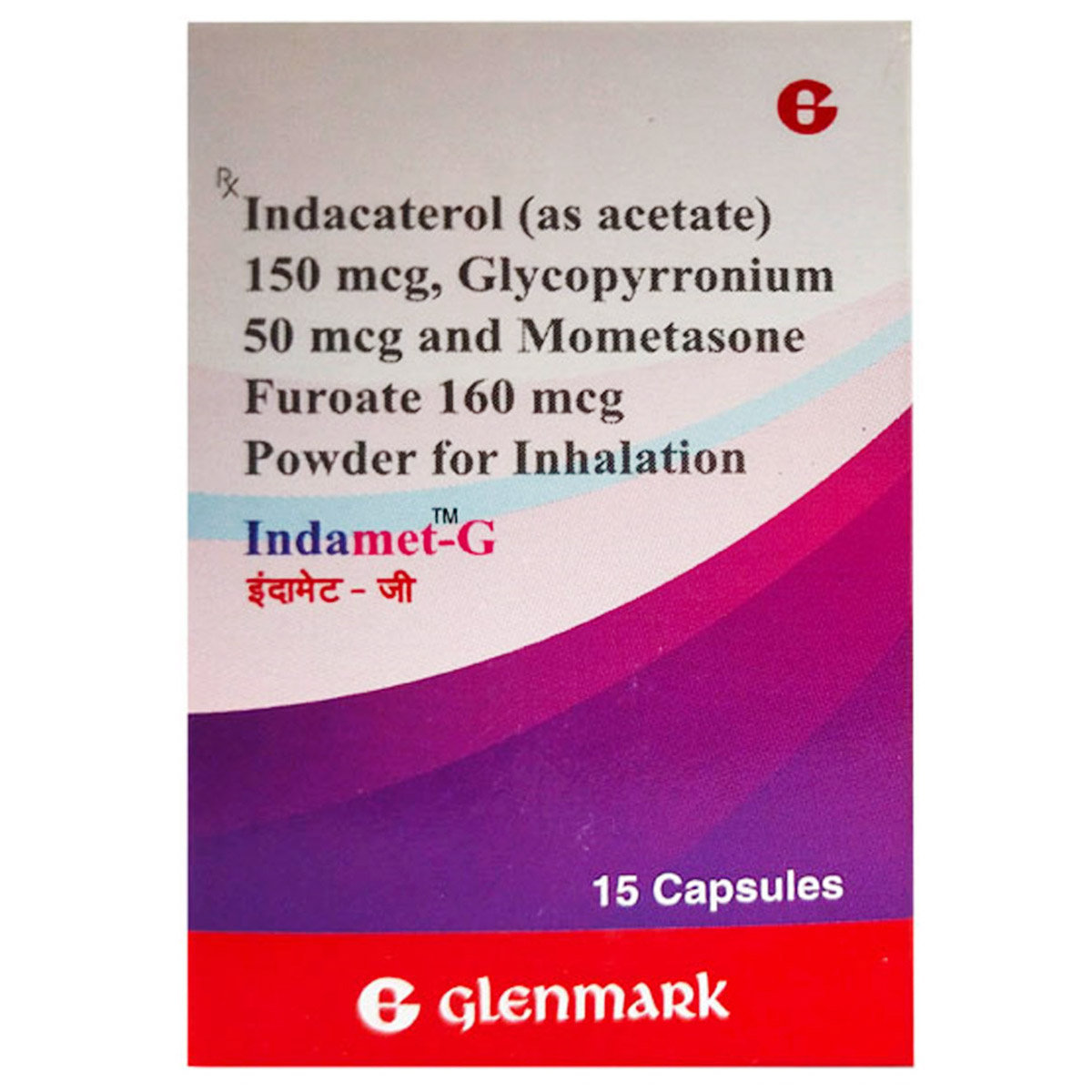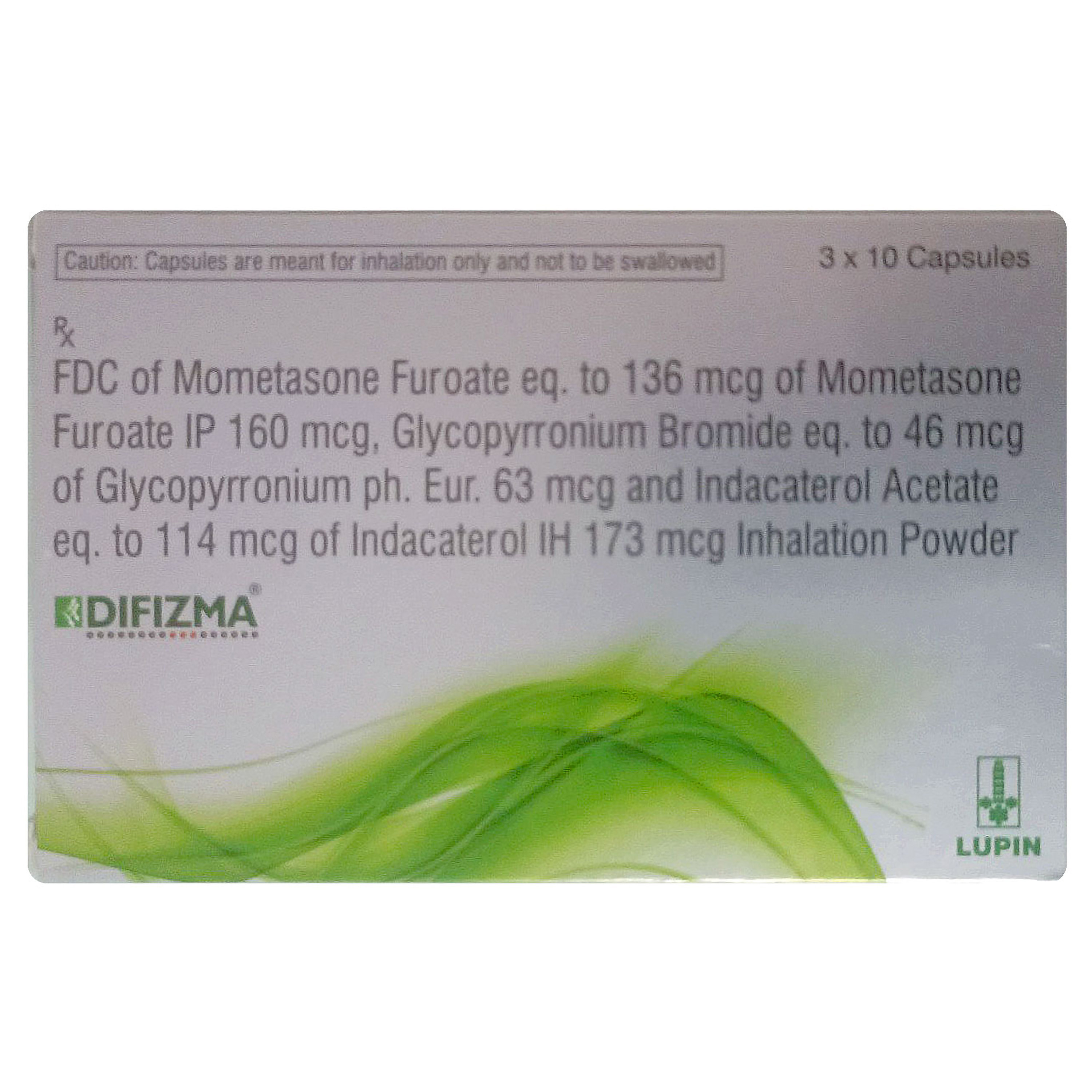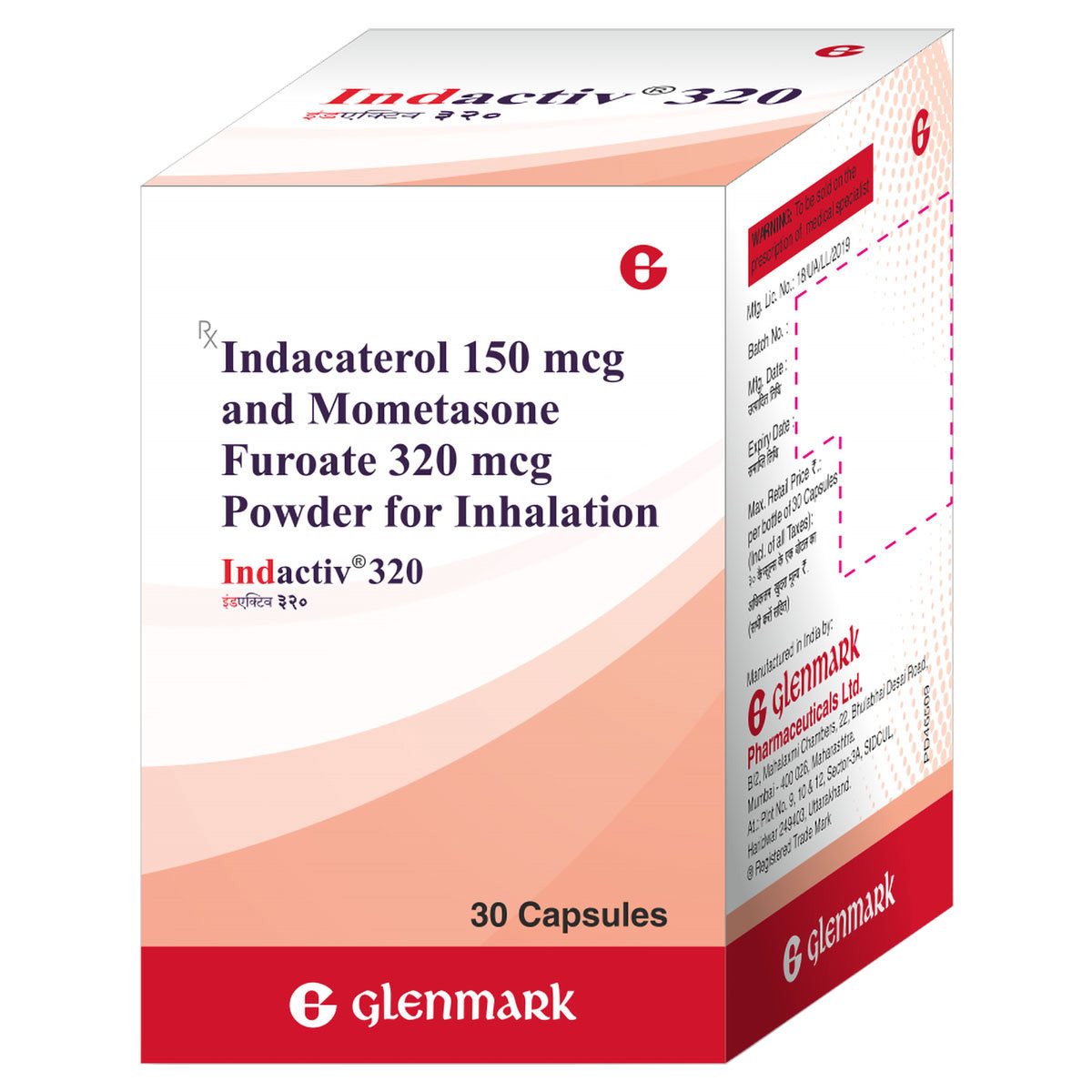Mometasone Furoate+indacaterol
About Mometasone Furoate+indacaterol
Mometasone Furoate+indacaterol is indicated as a maintenance treatment for asthma in adults and adolescents 12 years of age and older. Asthma is a long-term lung disease in which the muscles around the smaller airways become tight (bronchoconstriction) and inflamed, leading to difficulty breathing.
Mometasone Furoate+indacaterol contains two active substances called indacaterol and mometasone furoate. Indacaterol (bronchodilator) relaxes the muscles of the small airways in the lungs. This helps to open the airways and makes it easier for air to get in and out of the lungs. When taken regularly, it helps the small airways remain open. Mometasone furoate (corticosteroids) reduces the inflammation (swelling and irritation) in the small airways in the lungs. This gradually eases breathing problems and also helps to prevent asthma attacks.
Mometasone Furoate+indacaterol is for inhalation only. Do not swallow Mometasone Furoate+indacaterol. Use Mometasone Furoate+indacaterol as prescribed by your doctor. You are advised to use Mometasone Furoate+indacaterol for as long as your doctor has advised it based on your medical condition. Mometasone Furoate+indacaterol may cause common side effects such as sore throat, runny nose, sudden difficulty breathing and feeling of tightness in chest with wheezing or coughing, voice alteration (hoarseness), blocked nose, sneezing, cough, headache, pain in muscles, and signs of musculoskeletal pain. Most of these side effects of Mometasone Furoate+indacaterol do not require medical attention and gradually resolve over time. However, if the side effects persist or worsen, please consult your doctor.
Before using the Mometasone Furoate+indacaterol, inform your doctor about all your medical conditions, sensitivities, and medications you are using. Mometasone Furoate+indacaterol should not be used to treat acute asthma symptoms, including acute episodes of bronchospasm. Patients should not stop treatment without doctor supervision since symptoms may recur after discontinuation. Mometasone Furoate+indacaterol is not recommended for children below 12 years. If you are pregnant or breastfeeding, take your doctor’s advice before using Mometasone Furoate+indacaterol. If you have chest tightness, wheezing, coughing or breathlessness immediately after using Mometasone Furoate+indacaterol, stop using it and consult a doctor right away.
Uses of Mometasone Furoate+indacaterol
Medicinal Benefits
Mometasone Furoate+indacaterol contains Mometasone Furoate and Indacaterol. It is indicated as a maintenance treatment for asthma in adults and adolescents 12 years of age and older who are not adequately controlled with inhaled corticosteroids and short-acting beta2-agonists. Mometasone Furoate+indacaterol relaxes the muscles of the small airways in the lungs and reduces inflammation (swelling and irritation). This gradually eases breathing problems and also helps to prevent asthma attacks.
Directions for Use
- Mometasone Furoate+indacaterol is typically inhaled once daily; however, follow your doctor's instructions on the dosage and timing of this medication to ensure safe and effective use.
- Check the label for directions before using Mometasone Furoate+indacaterol.
- Mometasone Furoate+indacaterol is for oral inhalation only.
- Place the mouthpiece between your teeth, close your lips around it, and inhale deeply while pressing the dose indicator. Remove the inhaler and hold your breath for up to 10 seconds.
- Rinse your mouth with water and spit it out to avoid fungal infections in the mouth and throat.
Storage
Side Effects of Mometasone Furoate+indacaterol
- Sore throat
- Runny nose
- Sudden difficulty breathing and feeling of tightness in chest with wheezing or coughing
- Voice alteration (hoarseness)
- Blocked nose
- Sneezing
- Cough
- Headache
- Pain in muscles
- Signs of musculoskeletal pain
Drug Warnings
Before using the Mometasone Furoate+indacaterol, inform your doctor about all your medical conditions, sensitivities, and medications. If you are pregnant or breastfeeding, do not use Mometasone Furoate+indacaterol unless recommended by the doctor. Mometasone Furoate+indacaterol is not recommended for children below 12 years. Patients should not stop treatment without physician supervision since symptoms may recur after discontinuation. It is recommended that treatment with Mometasone Furoate+indacaterol should not be stopped abruptly. Patients who find the treatment ineffective should continue treatment but must seek medical attention. Mometasone Furoate+indacaterol should be used with caution in patients with cardiovascular disorders (coronary artery disease, cardiac arrhythmias, hypertension, acute myocardial infarction) and convulsive disorders.
Drug Interactions
Drug-Drug Interactions: Mometasone Furoate+indacaterol may interact with certain anti-cancer medications (e.g., cladribine, nadofaragene firadenovec) and certain medications used to treat high blood pressure (e.g., carvedilol, nadolol).
Drug-Food Interactions: No interactions found.
Drug-Disease Interactions: Mometasone Furoate+indacaterol may interact with various disease conditions, including cardiovascular disorders, diabetes, hypokalaemia (low potassium levels in the blood), seizures and hepatic impairment.
Drug-Drug Interactions Checker List:
Safety Advice

Alcohol
cautionThe interaction of Mometasone Furoate+indacaterol with alcohol is unknown. However, it is advisable not to take or limit alcohol as a precautionary measure.

Pregnancy
consult your doctorMometasone Furoate+indacaterol is given to pregnant women only if the doctor thinks the benefits outweigh the risks. Therefore, inform your doctor if you are pregnant before using Mometasone Furoate+indacaterol.

Breast Feeding
consult your doctorIt is unknown whether Mometasone Furoate+indacaterol is excreted in human milk. Your doctor decides whether to discontinue breastfeeding or to discontinue Mometasone Furoate+indacaterol, taking into account the benefit of breastfeeding for the child and the benefit of therapy for the mother. Therefore, inform your doctor if you are breastfeeding before using Mometasone Furoate+indacaterol.

Driving
safeMometasone Furoate+indacaterol usually does not affect your ability to drive or operate machinery.

Liver
cautionCaution should be exercised. Inform your doctor before receiving the Mometasone Furoate+indacaterol if you have a history of liver diseases/conditions. Your doctor will prescribe only if the benefits outweigh the risks.

Kidney
cautionLimited information was available about using Mometasone Furoate+indacaterol in patients with kidney disease. Inform your doctor before receiving the Mometasone Furoate+indacaterol if you have a history of kidney diseases/conditions. Your doctor will prescribe only if the benefits outweigh the risks.

Children
unsafeMometasone Furoate+indacaterol is not recommended for children below 12 years of age.
Habit Forming
Diet & Lifestyle Advise
Dietary and lifestyle changes can help you manage your asthma and potentially reduce the frequency and severity of attacks. Here are some key tips:
Diet:
- Focus on whole foods: A balanced diet rich in vegetables, fruits and whole grains provides essential nutrients that can keep your immune system strong and potentially reduce inflammation in the airways.
- Limit inflammatory foods: Some studies suggest that certain foods may trigger inflammation, which can worsen asthma symptoms. These include processed foods, sugary drinks, refined carbohydrates, and saturated and unhealthy fats.
Lifestyle:
- Maintain a healthy weight: Obesity can worsen asthma symptoms. Losing weight, if needed, can significantly improve lung function and reduce asthma attacks.
- Stay hydrated: Drinking sufficient water helps thin mucus secretions, making them easier to clear from your airways, and potentially reducing congestion and breathing difficulties.
- Identify and avoid triggers: Common asthma triggers include allergens like pollen, dust mites, pet dander, and smoke. Please pay attention to what triggers your asthma and take steps to avoid them. This may involve using air purifiers, keeping pets out of bedrooms, and monitoring pollen counts.
- Design an asthma action plan: Work with your doctor to create a personalized asthma action plan that outlines steps to manage your asthma daily and during an attack.
- Regular exercise: Regular physical activity can improve lung function and overall health, making it easier to manage asthma. However, it's important to choose activities you can tolerate and discuss an exercise plan with your doctor, especially if you have exercise-induced asthma.
- Get enough sleep: Adequate sleep is vital for overall health and can help regulate your immune system, potentially reducing asthma flare-ups.
- Manage stress: Chronic stress can worsen asthma symptoms. Relaxation techniques like yoga or meditation help manage stress and improve overall well-being.
- Don't smoke: Smoking is a significant irritant to the lungs and can significantly worsen asthma. If you smoke, quitting is the most important step you can take to enhance your lung health.
- Medications: Continue taking your asthma medications as your doctor prescribes, even when you feel well.
Patients Concern
Disease/Condition Glossary
Asthma: It is a chronic (long-term) lung disease where the muscles around the smaller airways become tight (bronchoconstriction) and inflamed, leading to difficulty in breathing. The asthma symptoms include wheezing (whistling sound while breathing), chest tightness, cough and shortness of breath, especially at night. The symptoms of mild persistent asthma may occur more than two times a week and up to 4 nights in a month, whereas, in the case of severe persistent asthma, the symptoms occur several times every day and most nights. The asthma treatment includes medication, breathing exercises, and self-care.
FAQs
Mometasone Furoate+indacaterol is used to treat Asthma.
Mometasone Furoate+indacaterol works by relaxing the muscles of the small airways in the lungs and reducing inflammation (swelling and irritation). Thus, it helps ease breathing problems gradually and prevent asthma attacks.
Mometasone Furoate+indacaterol should not be used to treat acute asthma symptoms, including acute episodes of bronchospasm.
Do not stop using Mometasone Furoate+indacaterol if you feel well. You are advised to use Mometasone Furoate+indacaterol every day and not only when you have breathing problems or other asthma symptoms to ensure it controls your asthma properly.
Mometasone Furoate+indacaterol may produce a clinically significant cardiovascular effect in some patients, as measured by increases in pulse rate, blood pressure and/or symptoms. If such effects occur, treatment may need to be discontinued.

